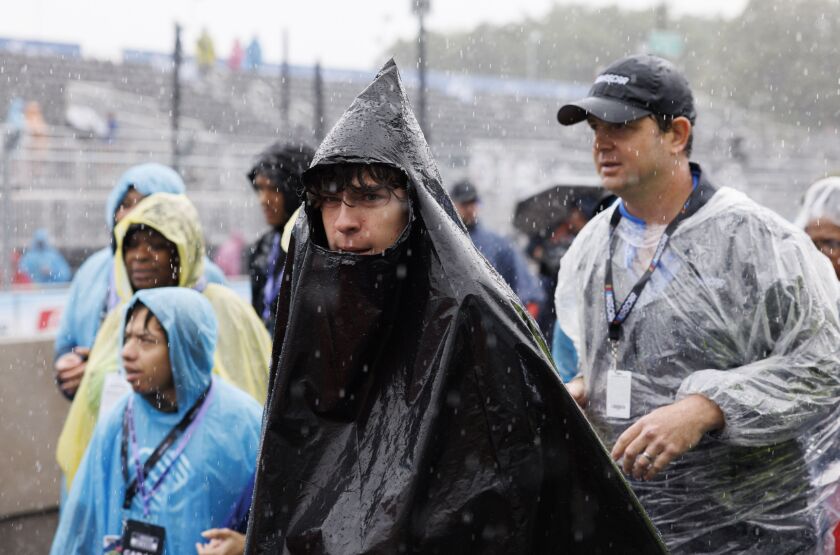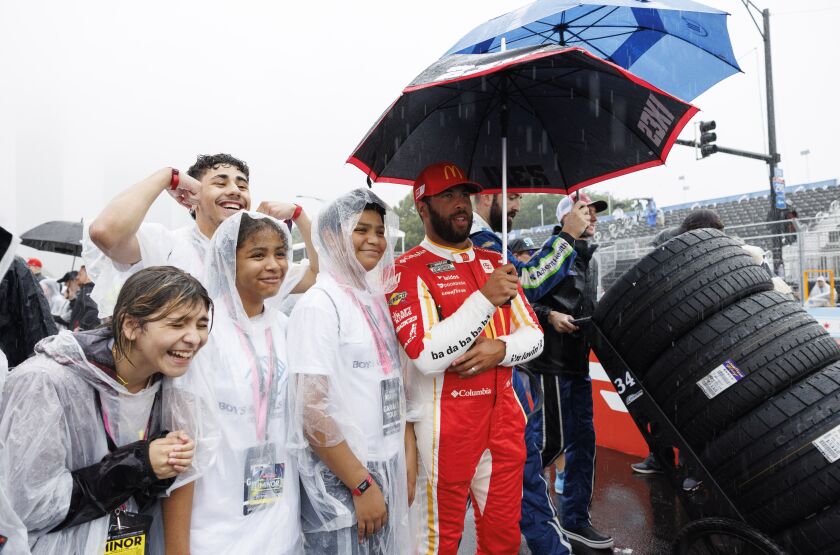It’s just a race, we told ourselves.
Walking in Grant Park, drenched from record-setting rain, we questioned why we Chicago reporters were giving so much attention to a NASCAR street race that Fourth of July weekend.
The racing franchise seemed unfamiliar to this Midwestern city, more accustomed to a baseball or football game than souped-up stock cars tearing around downtown.
We considered ourselves representatives of a northern city that would be indifferent to a race associated with the rural South. Neither of us were NASCAR fans. We had never even watched an entire race.
So why would NASCAR hold a race here? Why were we both shivering in soaked shoes at the track asking spectators about race day?
Like many Chicagoans, we were quick to judge this unfamiliar sport before we had a chance to see it for ourselves and get to know its fans.
First, we learned that rain is not enough to deter a hardcore fanbase — many of whom had been living in the Chicago area all along, unknown to us.
Second, we learned that the appeal of the sport needs to be learned — and felt — in person.
The television screen can’t translate the experience of being along the track, the revving engine noise ripping through your chest, the massive scale of the course, the throngs of spectators.
It was clear to us, after being in the crowds, that fans understand that appeal at a visceral level.’
‘Ain’t the first rain we’ve had’
Some traveled hundreds of miles to see the first NASCAR street race in the franchise’s 75-year history.
“It ain’t the first rain we’ve had in NASCAR,” Margaret Kanakos of upstate New York told us.
We also met fans who were NASCAR completionists — like Bob and Sandi Potter of Iowa — who have gone to every racetrack.
“But they keep adding new courses,” Bob Potter said.
These were loyal fans, enduring downpours and cross-country travel for a peek at the experimental race, which race officials said was their most ambitious in terms of scale.
Most fans we spoke with took the rain in stride, making us question our own reporter toughness. The rain was so bad at one point, we spotted a seated security guard remove his boot, dump out a cup of water, then slip the boot back on.
We occasionally retreated to the press room at the Art Institute of Chicago to change into spare sets of dry clothes. But no matter how careful we were to keep dry, we always seemed to feel a little damp — and overcome by shivering.
Fans hiding in plain sight
We were surprised the race brought out the countless stock car fans living under our noses.
We encountered longtime fans from the South Side at a NASCAR party held days before the races.
“I can’t name five football players, I can’t name five basketball players, but I can name every single NASCAR driver,” Hyde Park resident Monique Howard told us.
The race also drew curious onlookers without tickets who gathered on the permitters of the track, trying to catch a glimpse of the race.
On Michigan Avenue, we saw some people watching the race from atop a bus shelter. Others tore off mesh fence covers meant to block viewing from outside the track.
Standing with them outside the track, we felt the race’s allure. The energy was gravitational — crowds and deafening engines along the streets and park we knew so well.
“This is so bizarre,” Amanda Simmons, a student at Roosevelt University, told us. “Never did I think my summer in Chicago would involve NASCAR.”
Some who attended weren’t even NASCAR fans.
We ran into Salvador Duenas and his son Ricardo while waiting for an Orange Line train as we headed to the race that weekend.
They told us they’d never seen a NASCAR race, not even on TV, but they got tickets for the “experience.”
And what an experience it was — one we’ll likely remember for a long time.
We even tried to measure the level of that thrill, literally, in the form of decibel readings for a story about race car noise.
Our colleague Ellery Jones helped us take sound level readings across the track. Even with mufflers — NASCAR’s second time using them — we measured over 100 decibels in several locations.
But some parts were harder to measure.
‘Big city that’s open to new things’
In more than 30 news articles in a little under a year, we wrote about how the NASCAR race grew from an idea to reality.
Much of our reporting leading up to the race focused on the fear of downtown residents about the takeover of Grant Park and disruptions like street closures, traffic jams and the roar of engines.
Others doubted that people would show up to a race so far away from NASCAR’s fan base.
Those concerns seemed like convincing reasons to nix the race.
But the race was pulled off mostly without a hitch — even in the face of torrential rain and the death of a contractor who was electrocuted.
Afterward, we realized most of our early reporting failed to capture the views of the scores of locals who not only didn’t mind the race, but were actually excited about it.
We didn’t meet those folks until race weekend.
Naomi Schrock, of West Town, told us she did not understand the complaints from neighbors around Grant Park.
“They’re living in a very cool, big city that’s open to new things,” she said. “What’s one weekend?”
It wasn’t until we got our boots on the ground — and we got a little cold and wet — that we warmed up to NASCAR and understood its fans’ enthusiasm for the sport.























